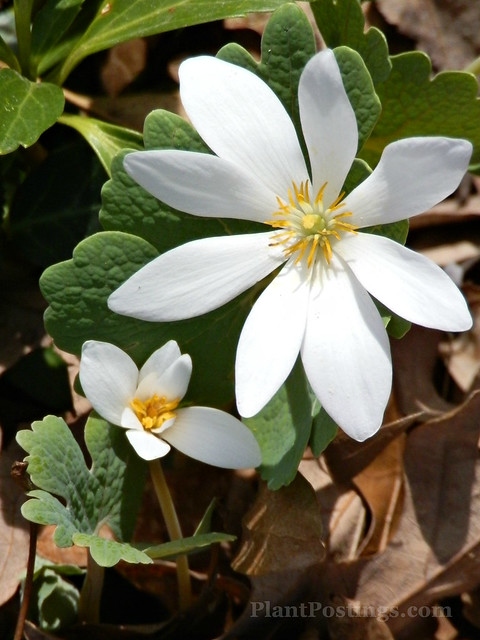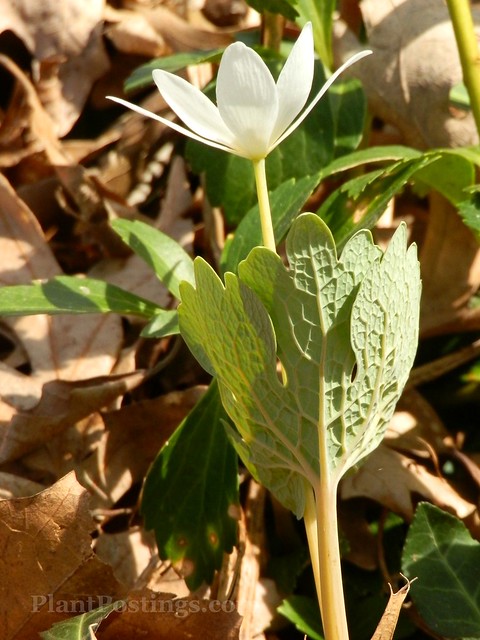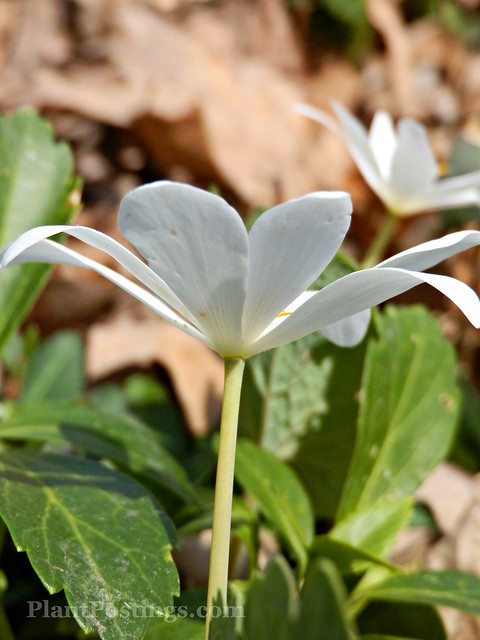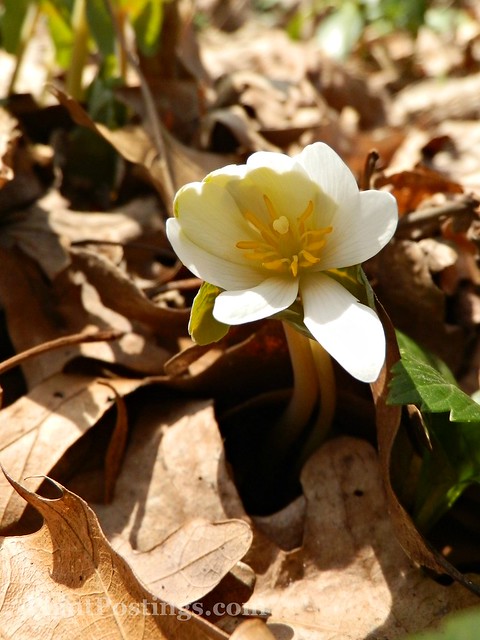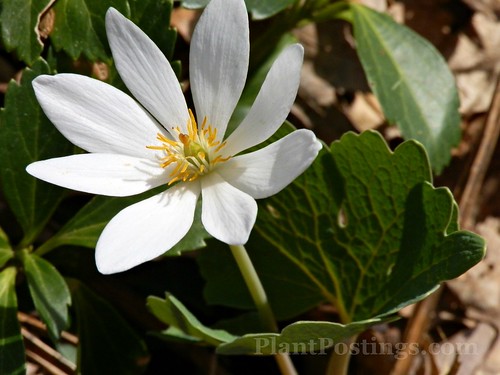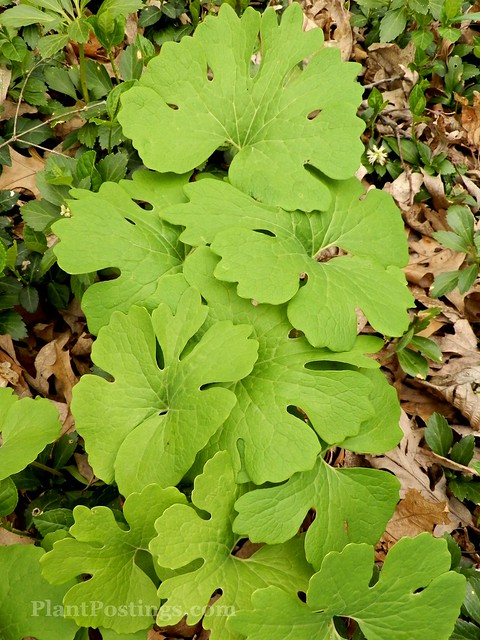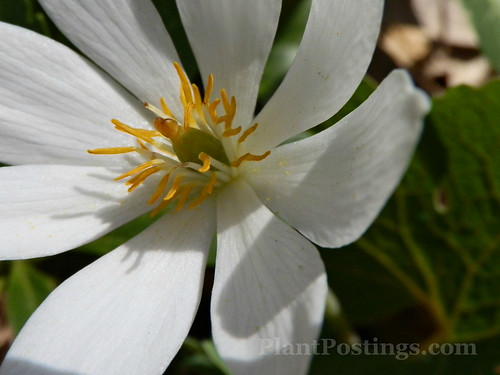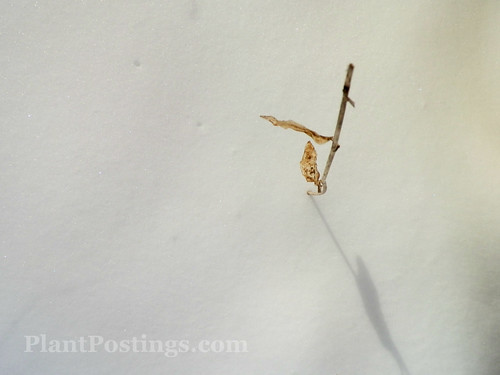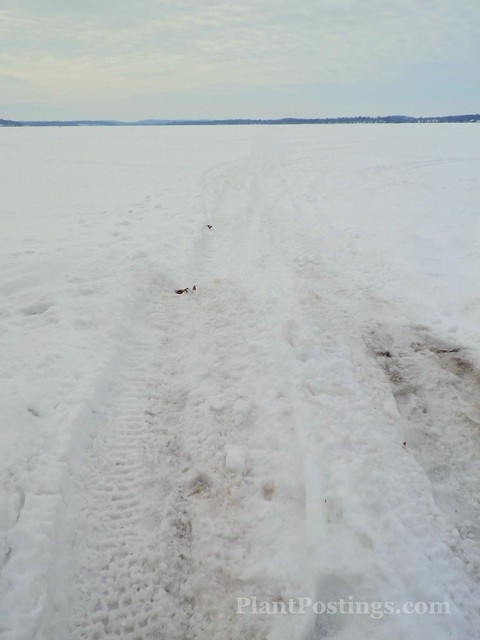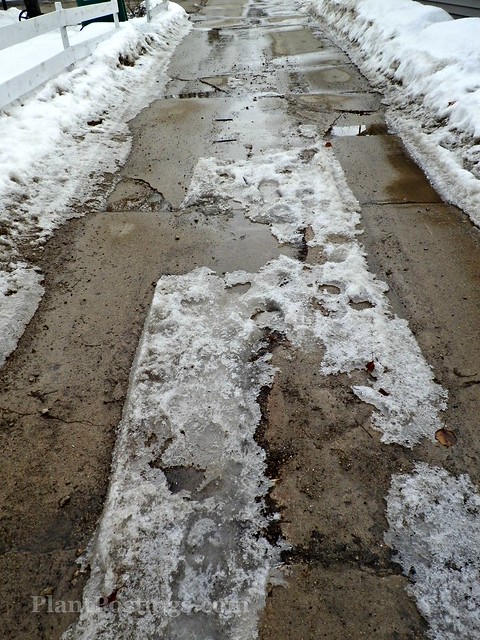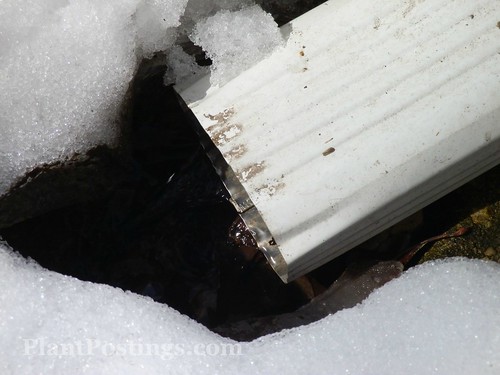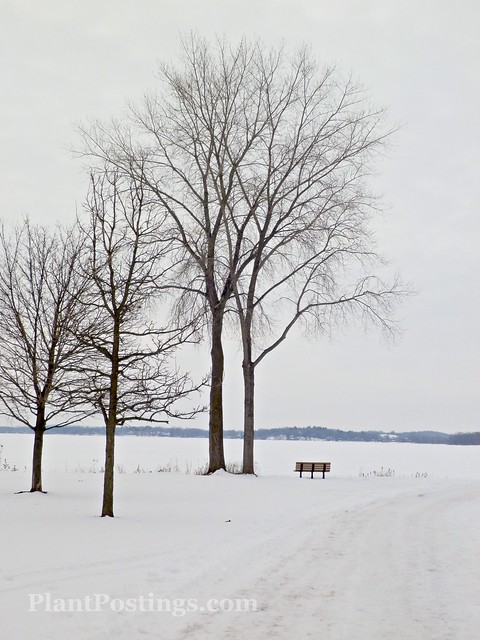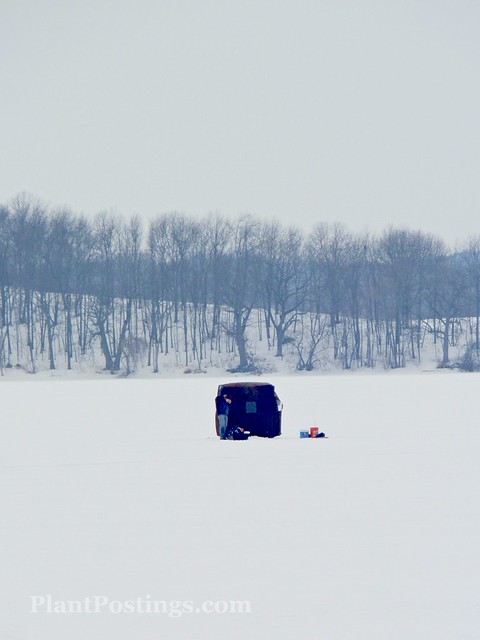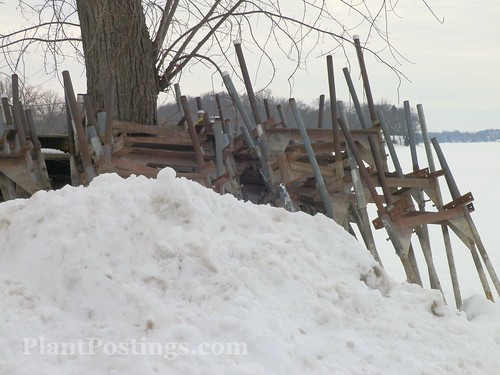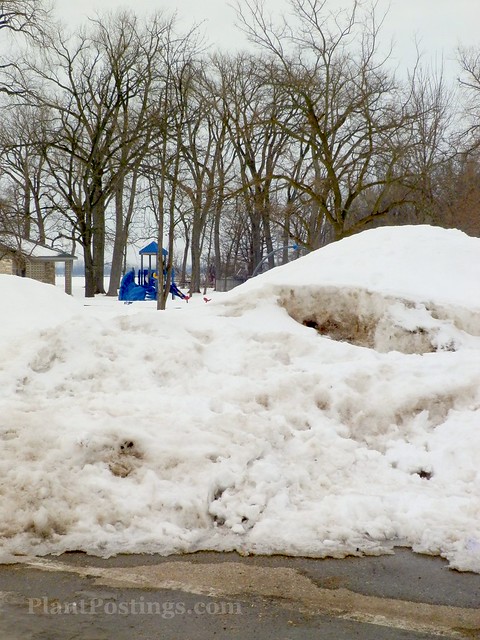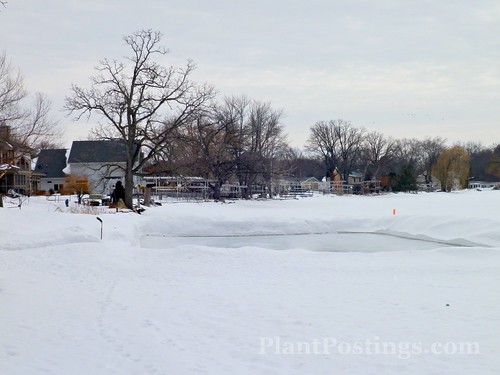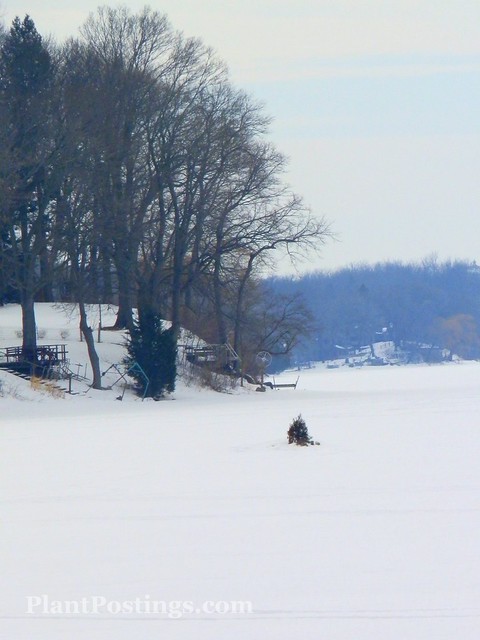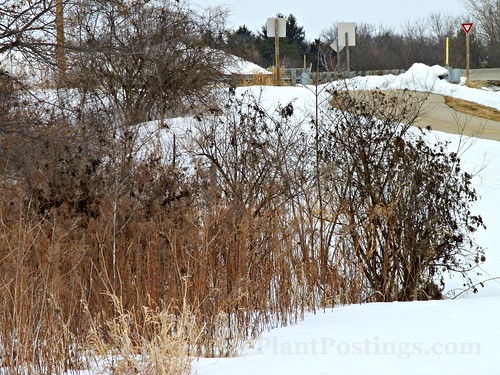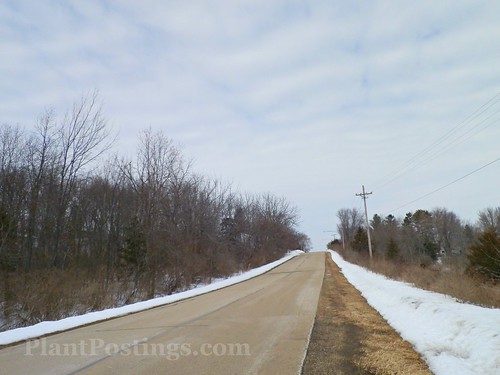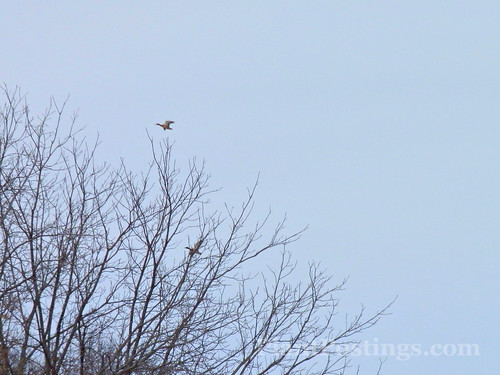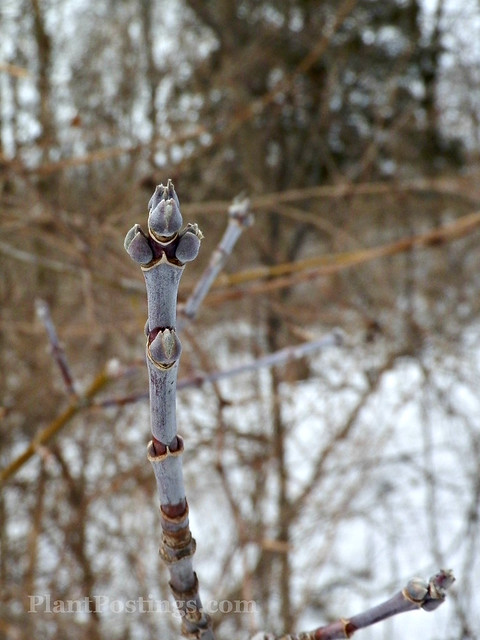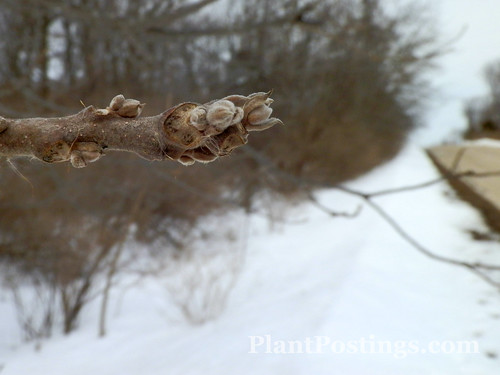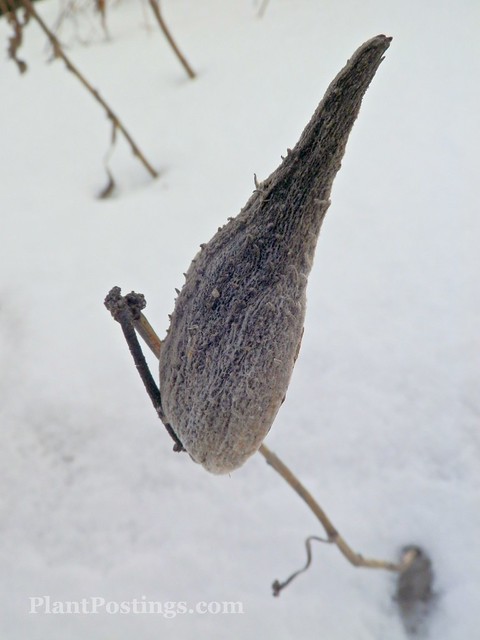It's time to wrap up the "Lessons Learned" meme for the past season, and I must mention one more lesson I've learned: Most of the Northern gardeners who participated in the meme this time have a lot more patience with winter than I do.
In December, I was determined to enjoy the little joyful moments of winter, including the pretty little winter berries, the juncos, and the ice formations.



But this brutal winter kept even the juncos under cover most days, and kept me inside--away from the nifty ice and the pretty little berries.
"Patience" was the most common theme of your lessons this season. I'm impressed. Generally, I'm a patient person, but not with winter.
So you Northern folks who still feel patient get the prize. And gardeners in the South and in the Southern Hemisphere: I envy you.
In any case, thanks to all who participated, including:
Holley at Roses and Other Gardening Joys, in Texas, U.S., who describes the lessons she learned when a prison escapee was on the loose in her community, yet she was determination to venture out and prune her Roses anyway. The escapee was later captured, but the newly clipped Roses suffered a cold-weather setback. Rose learned, "Like a desperate escapee, the weather is never predictable. You have to keep alert to it. Odds are, it will come into the garden sometime during the year, wreaking havoc. It can be record cold, an extreme drought, or scorching summer temperatures. Some years, it's all three."
Angie at Angie's Garden Diaries, in Scotland, U.K., shares "when not to move a Clematis." While she's since received very specific advice on the topic, Angie learned one very specific lesson: Do not move a Clematis "one hour before a doctor appointment, knowing full well your blood pressure will be checked!" She's also come to realize that "gardeners all have their own gardening regimes. What works for some will not work for others. When is the best time to move, and when is the wrong time to move? Can or should it be moved? Sometimes the answer is with the gods!"
Sue at Diary of a Suburban Gardener, in Victoria, Australia, offers lessons from record heat and drought this past season--obviously, the opposite problem of most of us U.S. gardeners this year. Sue learned which of her impressive plants can survive and thrive at the extremes. Among them: Common Sage, native Australian grasses, Veronica perfoliata, Plumbago auriculata, Rosemary, various Euphorbias, Santolina, Hellebores (in shade), Wallflowers, Ornamental Comfrey (in shade), Scented Geraniums, and Indigofera australis. She also shows glimpses of animal visitors to her garden.
 |
| Crocuses from my garden last year. |
Donna at Gardens Eye View, in New York State, U.S., has big plans for retirement. And she's celebrating! Her lessons: "Lean in and enjoy where you are, even if it's cold and snowy. Find the beauty and joy of your surroundings. When I stop fighting and being negative, I see the lovely details of the early morning sun sparkling on the snow, the different textures of the snow, and the way the spent blooms catch the snow, and so on." This kind of reminds me of
a song from the movie "Frozen" that I can't get out of my mind ...
Rose at Prairie Rose's Garden, in Illinois, U.S., offers the wisdom that while there might not be colorful blooms outside during the winter, what's more beautiful than a bright red cardinal on freshly fallen snow? Rose shares her techniques for overwintering several specific plants. She's looking forward to finding out how they fared. I agree with her and commiserate on these points: "This winter has been a reminder of what true winter in the Midwest is like ... Winter has taught me a lot about patience, but the best part of winter for me is that it makes me appreciate spring that much more."
KL at Beautiful Boonton and a Novice Naturalist, in New Jersey, U.S., describes the joy of birdsongs--especially as the winter wanes. She's noticing them gathering materials for nests. She's also spends the colder days planting seeds for her summer garden. Her biggest lesson: not to rush when planting and tending indoor seeds and plants. She also shares the importance of having a garden plan--"where each plant will go, when they will go in, and what will come after them ... planning for the garden is an absolute must."
 |
| Lilac buds in late winter. |
Others with lessons added in their comments, include:
Lynne at
Irish Garden House, who considers the pros and cons of deadheading her Rhododendrons. John at
Gardens at Waters East is anxious for the snow to melt so he can get out into the garden. Deb at
Deb's Garden wants more Sedges, after recently learning how much she loves them.
Helene at
Graphicality-UK is pleased that she didn't lose any plants this winter, because London didn't have any frost. Tatyana at
My Secret Garden warns not to water Burro's Tail succulents if you want them to overwinter. Lee at
A Guide to Northeastern Gardening hopes the winter wasn't too harsh on the plants.
 |
| Hellebores emerging last spring. Can't wait to see these babies! |
Aaron at
Garden of Aaron says "winter interest" does matter to him, and many of his plants weren't as winter-hardy as he thought they would be. Jason at
Garden in a City plans to share what he learned in a garden designer drafting class.
Sweetbay says planning does little good, since the weather and the voles have other ideas.
Jen at
Muddy Boot Dreams loves to "look out the window at the snow-covered mounds that are my plants, and plan." Tammy at
Casa Mariposa says winter allows her to step back from garden problems and solve them in a more rational way than she would during the growing season.
Ricki at
Sprig to Twig says moving potted plants to the front porch isn't protection enough during the coldest days of a brutal winter. Karen at
Quarry Garden Stained Glass is lamenting the sun scald and dessication that some of her plants suffered from this brutal winter, and plans to wrap them next winter.
~ ~ ~ ~ ~ ~ ~ ~ ~ ~ ~ ~ ~ ~ ~ ~ ~ ~
So there you have it! Wow, that's a lot of lessons! If I forgot anyone with lessons to share, please let me know and I'll add them here.
I'm still digesting all the new knowledge, wisdom, and advice. I promise to try to be more patient, really I do.
 |
| Yeah, I can see myself sitting here right about now. |
Or maybe I'll just move south.
(I mean no disrespect by the title of this post. It's a tease, and I'm simply poking fun at myself for my lack of patience with winter. Oh, and happy spring to gardeners in the Northern Hemisphere, and good harvest to those in the Southern Hemisphere!)
